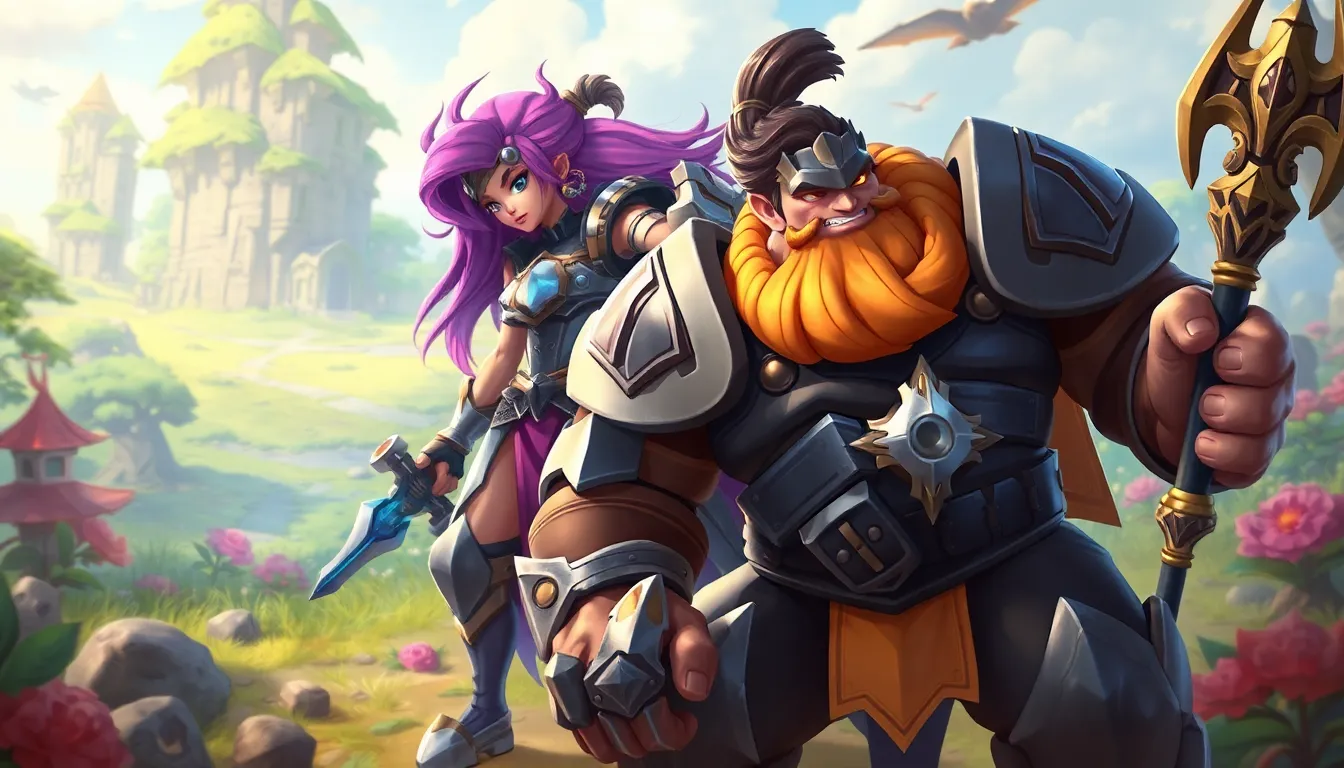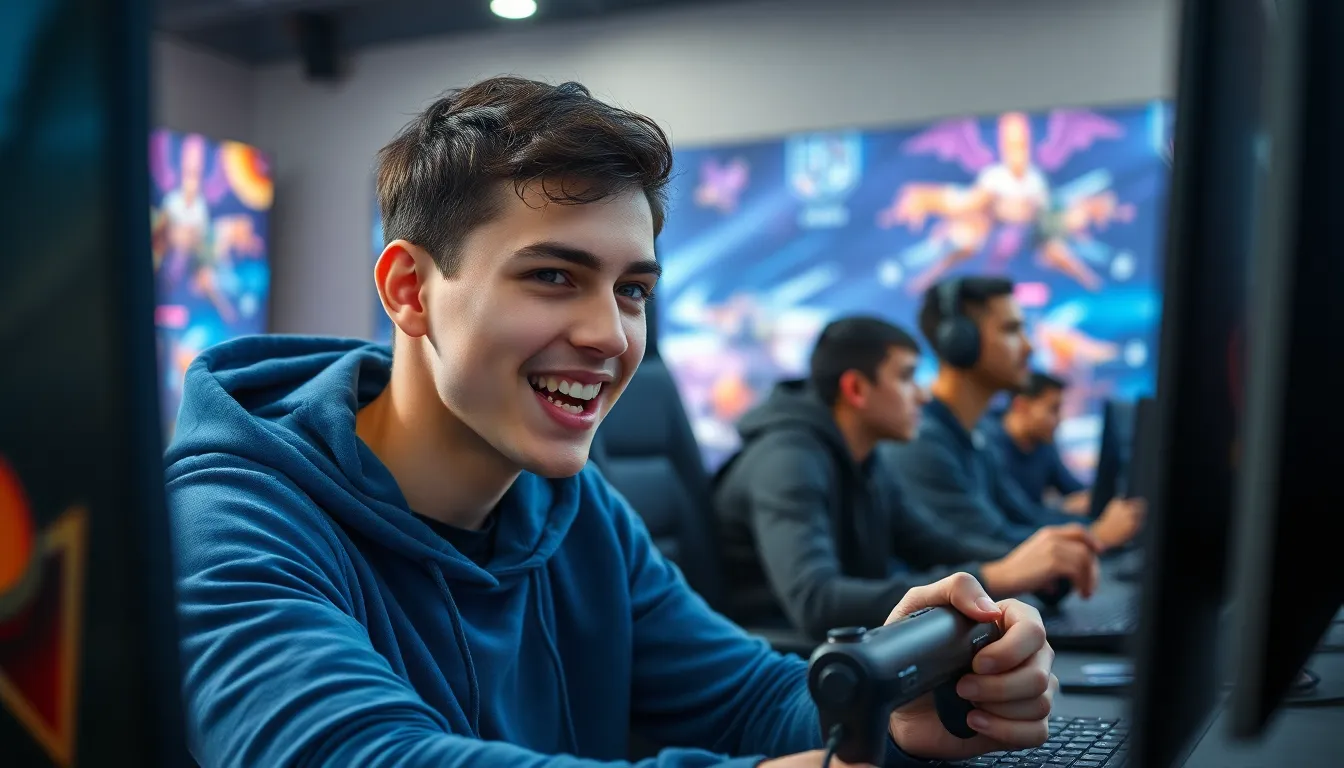In the fast-paced world of MOBAs, positioning can make or break a game. Picture this: your team’s about to secure a crucial objective, but one misstep leads to disaster. Suddenly, your champion is face-to-face with a raging enemy, and it’s game over. Understanding positioning isn’t just a skill—it’s the secret sauce that separates the pros from the noobs.
Mastering the art of positioning means knowing when to dive in and when to hang back, all while keeping your eyes on the prize. It’s like dancing a tango with danger, where one wrong move could have your team singing the blues. So, buckle up and get ready to elevate your gameplay. With a sprinkle of strategy and a dash of humor, this guide will help you navigate the intricate dance of positioning, ensuring you’re always in the right place at the right time.
Table of Contents
ToggleUnderstanding MOBA Positioning
Positioning serves as a pivotal aspect of gameplay in MOBAs, influencing outcomes significantly. Players benefit from mastering this skill, as it dictates their effectiveness in battles and overall strategy.
Importance of Positioning in MOBAs
Positioning plays a critical role in determining a team’s success. Effective placement maximizes damage output while minimizing risks. Poor positioning often leads to unfavorable engagements, causing significant loss and detrimental effects for the team. Successful players assess situations swiftly, identifying when to advance or retreat. This proactive approach keeps momentum in their favor. Ultimately, strong positioning catalyzes wins, driving teams to victory while fostering individual skill development.
Common Positioning Strategies
Players utilize various positioning strategies to enhance gameplay. Flanking creates unexpected angles of attack, allowing for surprise engagements. Maintaining distance from threats ensures survival while dealing damage. High ground advantages offer increased visibility and control over objectives. Grouping with teammates fosters strength in numbers during crucial team fights. Prioritizing map awareness aids in recognizing opportunities and avoiding ambushes. Adapting these strategies based on opponents’ movements facilitates a more effective approach to positioning and gameplay overall.
MOBA Positioning Roles

Positioning plays a vital role across different character roles in MOBAs. Each role carries unique responsibilities that influence overall gameplay and team dynamics.
Tanks and Frontliners
Tanks and frontliners absorb damage to protect teammates. They engage enemies, drawing attention away from damage dealers. Maintaining a prominent position in team fights ensures they can soak up incoming attacks. Frontliners should position themselves at the forefront, utilizing crowd control abilities to disrupt enemy formations. Their presence creates opportunities for allies to unleash damage safely. Knowing when to engage or retreat is essential to maximize effectiveness. Effective frontliners constantly assess enemy positions, waiting for the right moment to protect the team.
Damage Dealers
Damage dealers focus on inflicting high burst damage quickly. Positioning remains crucial as they need to balance aggression with safety. Keeping a safe distance from the frontline allows them to unleash their abilities without being targeted. Awareness of enemy threats ensures that they don’t overextend. Strategic flanking can catch opponents off guard, leading to advantageous trades. Responsible positioning allows damage dealers to capitalize on vulnerabilities within enemy defenses. Staying with teammates enhances survivability, making it easier to secure kills while minimizing risks.
Support Characters
Support characters offer crucial assistance to their team through healing and crowd control. Positioning determines their ability to influence fights effectively. Keeping a safe distance from danger protects them while still staying close enough to provide help. A well-placed support can turn the tide of battle with timely heals or crucial shields. Awareness of allies’ locations is critical for maximizing their impact. Prioritizing map vision helps in maintaining control over objectives. Support players must remain vigilant, adjusting their positions to ensure they can aid teammates while avoiding unnecessary risks.
Key Factors Influencing Positioning
Positioning in MOBAs depends on various critical factors that significantly impact gameplay.
Map Awareness
Understanding the layout of the map enhances strategic positioning. Players should recognize key landmarks, jungle paths, and terrain features. Knowledge of these elements informs decisions regarding ambushes or retreats. Observing enemy movements creates opportunities for advantageous encounters. Maintaining awareness of objectives, such as turrets or dragon spawn points, often dictates when to engage or disengage. Effective map awareness allows for timely rotations, leading to successful team fights.
Enemy Positioning
Recognizing where opponents are positioned shapes player strategy. Tracking enemies’ movements helps identify potential threats and openings for attack. Players should maintain vision control through wards or scouting abilities. Gauging enemy cooldowns and ultimate abilities provides insight into their engagement potential. Smart players exploit weaknesses in enemy formations to initiate fights. Failing to consider enemy positioning can lead to unnecessary losses or missed opportunities.
Team Composition
Composition of the team influences overall positioning strategy. Different roles require unique positioning tactics. For instance, tanks need to assume frontline positions to absorb damage, while damage dealers should find safe spots to maximize damage output. Support players must ensure they stay close to allies without overextending. Synergizing with teammates strengthens positioning effectiveness. Coordinated movements aligned with team composition can create compelling strategies that overpower opponents.
Tips for Effective MOBA Positioning
Mastering positioning in MOBAs requires attention to several key factors that can enhance gameplay effectiveness.
Communication with Teammates
Effective communication remains crucial for successful positioning. Players should share their intentions before engaging in battles. Mentioning cooldowns, enemy locations, and team strategies enhances coordinated efforts. Establishing specific callouts, like “I’m flanking” or “pull back,” helps keep everyone informed. Listening to teammates’ insights also offers valuable information regarding enemy movements. Regularly discussing positioning objectives can foster a cohesive team dynamic. Awareness of each player’s role enables optimal positioning during critical moments.
Leveraging Terrain and Vision
Utilizing terrain advantages plays a vital role in positioning strategies. Higher ground often provides better vision, making it easier to spot enemies before they approach. Players can also use obstacles for cover while launching attacks on foes. Maintaining control of vision areas grants information on enemy capabilities and movements. Checking the minimap frequently ensures all players prioritize strategic terrain. By positioning near objectives like towers, players can protect their team effectively. Creating opportunities through terrain enhances offensive and defensive play.
Adapting to Game Progression
Adapting positioning throughout the match keeps players competitive. Early game tactics often focus on farming and controlling lanes. Mid-game shifts attention to securing objectives and coordinating team fights. Players should reassess their positions based on overall team strengths and weaknesses. Recognizing when to play aggressively or defensively depends on enemy compositions. As the game evolves, staying flexible allows players to respond to new threats and opportunities. Positioning choices should always reflect current game states and team compositions.
Mastering positioning in MOBAs is essential for achieving success in gameplay. Players who understand the nuances of their roles can significantly influence the outcome of matches. By honing their skills in map awareness and adapting to team dynamics, they can capitalize on opportunities while minimizing risks.
Effective communication and strategic placement not only enhance individual performance but also strengthen team cohesion. As players continue to refine their positioning strategies, they’ll find themselves better equipped to navigate the complexities of MOBAs. This ongoing development ultimately leads to improved gameplay and more victories on the battlefield.

